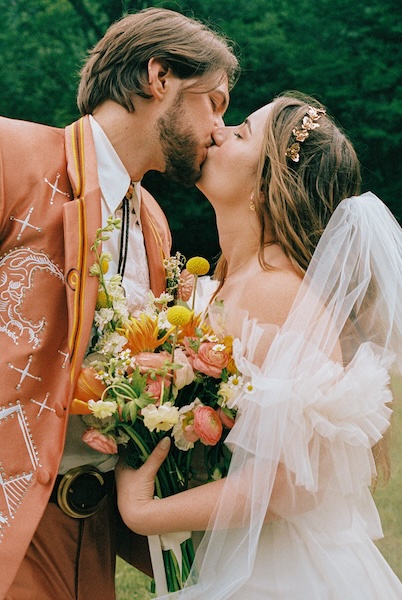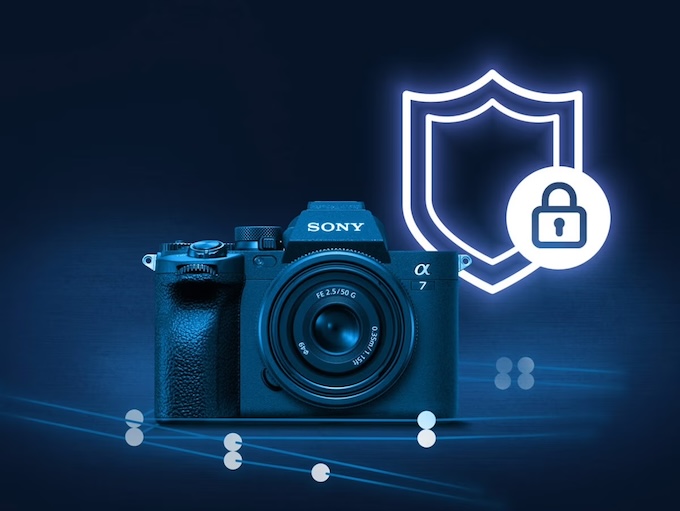Black-and-white photography asks the viewer to interpret a world in simple shades of gray. Contrasting light brings objects to life and beckons the eye to interpret the ordinary in unique and interesting ways. William’s photos accomplish this with a refreshing perspective—a $20 bill transcends its monetary value and a glove meets an unexpected demise. Through his use of light and shadows, William creates a world full of unexpected associations.
Jennifer Chen: How did you get started in photography?
William Castellana: I became interested in photography while at Purchase College, where I was on track to getting a degree in philosophy. I had no idea that photography would become my life’s passion until I signed up for a black-and-white photo course. Photographs made by Josef Sudek, Alfred Stieglitz and Alvin Langdon Coburn had a great impact on me, and this is probably why I favor making photographs that play on the lower tones of the photographic scale, especially in my black-and-white work.
When I got out of college, I started to freelance in the commercial industry as a lighting technician. It wasn’t exactly what I wanted to do since I was more interested in the fine arts, but since I needed to make a living it became a necessary choice. After a few years in the industry, I decided to take a few months off so that I could put a commercial portfolio together and launch a Web site. My photos caught the attention of Studio Photography magazine and they wrote a feature on my work. Shortly after that, Fuji commissioned me to make a picture to demonstrate the dynamic range of their Finepix S2 and S3 SLR cameras. Since then, my photos have appeared in such magazines as New York, Los Angeles, 20/20, Penthouse and King.
JC: How do you work with light in black-and-white photography?
WC: For my black-and-white still life work I alternate between different types of lights and set-ups since the realization of the idea is contingent upon choosing a certain type of light and technique. For example, in the Light Bulb series I employ a technique known as “painting with light.” In the image titled “Homage to Thomas Edison,” I handheld one incandescent light bulb, housed in its reflector and moved it around during a long exposure. Similarly, “Face Study #4” employs this same long exposure technique, however, three lights have been used instead of one, turning each one on and off at different intervals while moving the lights around to different locations to achieve the desired lighting effect.
In addition to painting with light, I often also use the light source as a picture detail. In “Face Study #1,” the two incandescent light sources have painted their reflections onto the light bulb glass creating the illusion that a semblance of face has somehow appeared. My inspiration for the Light Bulb series came from two sources; the imminent reality that the incandescent light bulb might soon be phased out being replaced by the more eco-friendly fluorescent bulb, and from Edward Weston’s exclamation, “It is classic, completely satisfying, a pepper, but more than a pepper: abstract, in that it is completely outside subject matter.”
JC: Your black-and-white photos are absent of any real people but there is a life to what you’re seeing, whether it’s a statue or a bridge or a block of ice. How do you work to compose your image so that there is life in still life?
WC: I don’t have set rules of composition and I’d like to think that these pictures compose themselves with minimal intervention. Oftentimes I feel as if I am just an onlooker, and the subject matter just happens to reveal itself in mysterious, uncanny ways.
JC: The image of Andrew Jackson on the crumbled $20 dollar bill is striking. How did you come up with that concept and what do you see as the image’s significance?
WC: I took this picture in the early 90s when I was in college. One of my professors, John Cohen, had arranged a private showing of Abelardo Morrell’s work and I became fascinated with some of the images Abe was making of books. So shortly thereafter, I made a photo of a $20 dollar bill. I decided to crumble the note, and to my surprise I noticed this unusual face staring back at me.
The currency seemed to take on new form as a result of the paper’s distortion. I crumbled the paper because I thought it might be interesting to photograph something that seemed to be found or discarded, since discarded items are usually more interesting than freshly made things in that they reveal the effects of time and experience. When I look at the crumbled currency now, it does make me think that it’s ready for the garbage since this is what we often do with paper before we relegate it to the trash. Oddly enough, Abelardo Morrell started to make his own pictures of money seven to eight years later.
JC: Give us some insight into your Swirl series. How did you come up with it and how did you execute it?
WC: I have these aluminum surfaces that I use for some of my commercial photos and sometimes I need to cut the surfaces down to exact sizes. As I was discarding the scraps, I noticed how beautiful they were and how they reminded me of many things like graffiti’s elegant line, or the tightly-wound wood shavings falling from a carpenter’s plane. I decided to retrieve the scraps from the trash and photograph them on the same surface from which they were cut.
JC: The Glove series is hauntingly beautiful, especially the opening image of a real hand cupping the gloved hand. Explain how you were able to shoot the water in the glove. What’s the glove’s symbolism?
WC: Finding the right glove made all the difference in being able to give the object a sense of depth and volume. I photographed many different types of gloves ranging from the typical yellow household glove to the standard surgical glove, but none of these satisfied the special quality of light that was needed to execute my vision. Luckily I was able to find these unusual household gloves at the 99-cent store that had the exact properties I was looking for. Their diaphanous quality was a perfect fit for my project since I was filling these so-called containers with water. I destroyed many gloves along the way in hopes of metaphorically communicating the transient stages of death as it might befall upon an inanimate object.
JC: You excel in both color and black and white. What appeals to you about photographing in black and white versus color? You document objects like light bulbs, lipstick, and chunks of ice and give these inanimate objects a sense of purpose. What beauty and stories do you see in these objects that you’re able to translate visually?
WC: I prefer black-and-white imagery because its tones are more akin to musical scale. Tonality becomes a very sensual and important tool for expressing mood in black-and-white photographs, and I feel more comfortable in its monochromatic space. However, that’s not to say I don’t enjoy making color pictures.
I think what fascinates me the most is the object itself and not necessarily its function, especially when it’s in front of my lens. These objects become metaphors—a block of ice becomes a mountain, a light bulb transposes from something concrete into something abstract, a discarded aluminum scrap becomes a gestural expression for the object’s elegant flow. This is what gives these objects a new sense of purpose for me.
JC: The Ice series—how did you photograph those blocks of ice without showing any melt? How did you get those nice bubbles in the ice to shine so clearly?
WC: It was a lot of trial and error. I would melt the ice blocks with a blowtorch and then re-freeze them when I had the desired shape [above, right]. Before the ice went on set, I would shock it with hot water and this would cause beautiful cracks in the blocks’ inner and outer surface. Since the lighting was already in place, there was hardly any melting.
After the images were captured digitally, I would develop the RAW files in Photoshop and then employ only basic burning and dodging techniques in order to bring out the subtle details already inherent in the ice block’s structure.
JC: The Light Bulb Series focuses on an actual light bulb. How did you light it?
WC: Well, there were many technical questions considered, the most important, “How do I eliminate all of the unwanted room reflections that the light bulb glass reflects naturally?” My solution was an epiphany of sorts; Like Edward Weston’s famous picture of a green pepper photographed in a tin funnel, I also placed my light bulb in a reflective container—a 32-ounce stainless steel replacement cup for a Waring Pro Juice Extractor—in order to have light reflect back through the bulb creating the specific mood I was looking for. The reason for using the stainless steel container as a background was threefold; it took the bulb out of its context eliminating unwanted room reflections, it bounced back the right reflections through the light bulb glass and it gave it a striated texture when lit a certain way.
JC: When you’re working on a series of images, how do you know when you have all the images you want? When do you feel like the series is complete?
WC: I only became aware that I have all the images I want when subsequent images fail to bring something fresh to the project’s intention, however, that doesn’t necessarily mean that the series is complete. A series is never really complete for me. It’s always a work in progress.
When I start working on an idea I like to keep intent open-ended since the creative process willingly invites new ways of seeing and interpreting. For example, when I started the light bulb project it wasn’t my initial intention to make some of these light bulbs look face-like. I only started to notice this abstract and vestigial quality as I was allowing the lights to reflect into the light bulb glass. It was at that moment I realized the brains propensity to see a face when it sees two circles spaced appropriately within another larger curvilinear shape. As the project progressed, I experimented with different lighting sources in order to achieve the desired effect. It was a great challenge that ended when I realized that I could no longer coax the lighting into animating these seemingly inanimate light bulbs. This is when I began to edit hundreds of pictures selecting only those that served the desired results.
JC: How does New York City inspire you as an image-maker and how do you hope to portray it?
WC: What inspires me the most about the city is the challenge of removing all the visual noise inherent in a bustling city, and distilling it into contemplative moments that can be observed intimately. Both the skyline and train image are images made in Williamsburg, Brooklyn, where I currently reside.
JC: What’s something surprising that most people don’t know about you?
WC: I often take photos of the Brooklyn landscape while on rollerblades with my Jack Russell in tow. View William’s work at www.williamcastellanaphoto.com.
Jennifer Chen is the associate editor for VegNews magazine and the former features editor for both Rangefinder and AfterCapture. She has written for Everyday with Rachael Ray, Natural Health, Bust and Audrey. She blogs at www.typecraftwriter.com.





